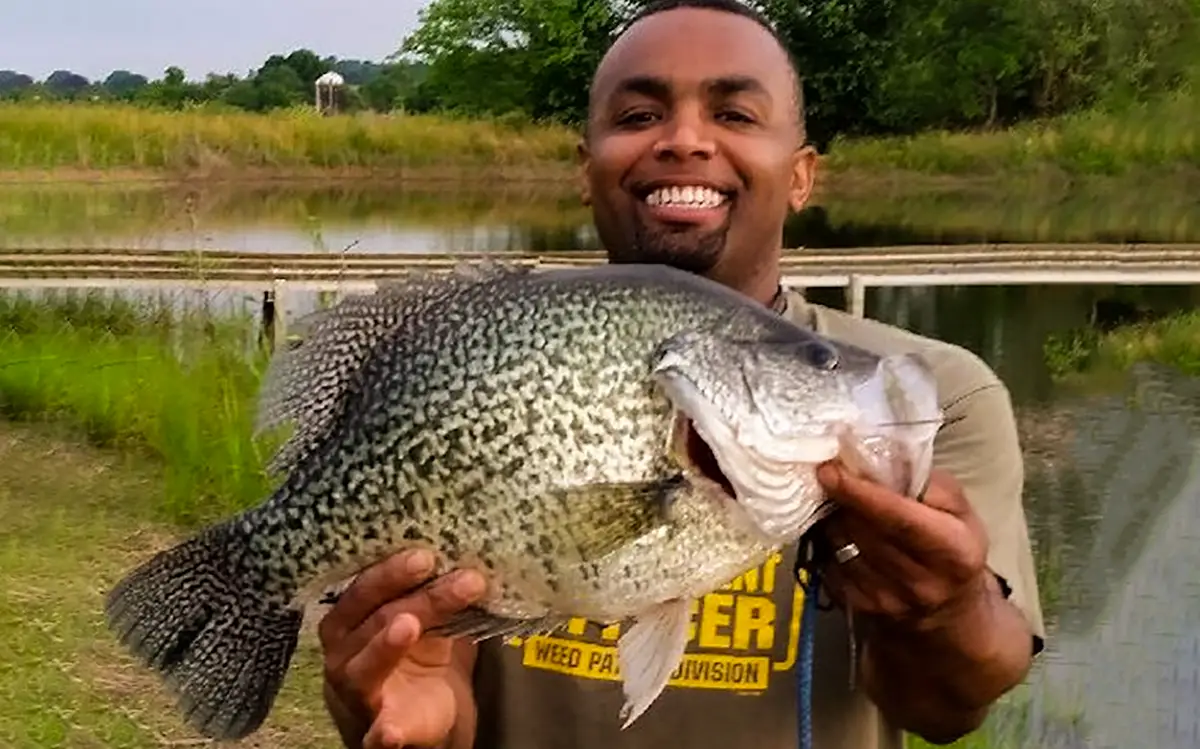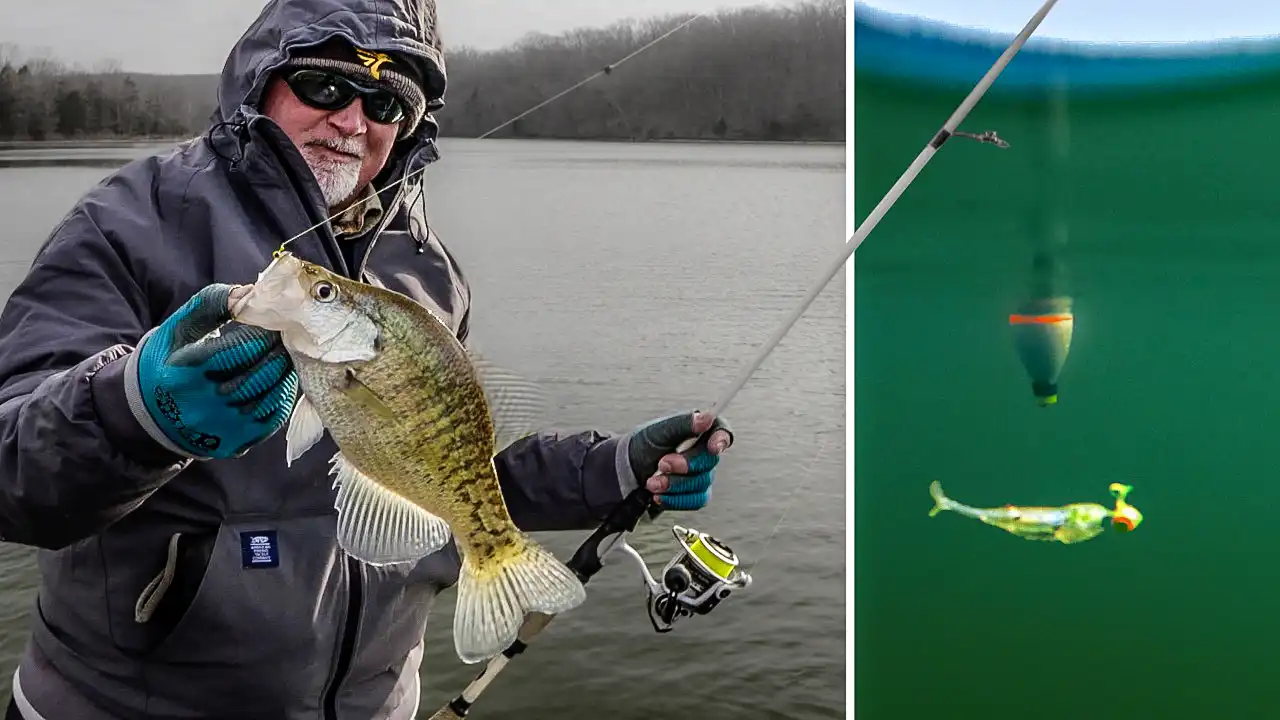Bluegill fishing is fun, action-packed, and has the ability to make you feel like a kid 50 years after the fact. It’s also a great way to introduce new folks to fishing. And it’s not difficult and doesn’t require a lot of tackle or knowhow to catch fish. And it’s some of the best eating in my humble opinion.
That makes bluegill arguably the most appealing fish, universally speaking, for anglers of all ages and levels. I have been fishing for bluegills in some shape or fashion for more than 40 years. And I’d love to share a few tips to help you get started quickly and have a lot of fun doing and to help you progress to more and bigger bluegills so you can really enjoy some fun fights and delicious eating if you so choose. And who knows with a little luck maybe stumble onto your state record or world record bluegill.

Where to find bluegill
The first thing to consider is where you find bluegill. Thankfully they are plentiful in most every state with the exception of Alaska. But they are found just about everywhere and of course some places are better than others. But what’s really neat is there are some incredible bluegill fishing spots in every region of the country. Down South, Out West, Up North, Back East — every region has honey holes that offer some of the biggest bluegill ever caught in those areas.
But chances are there is good bluegill fishing on your local lake or a pond near the house. Our full feature on the Bluegill species will go more into depth on their habitat, diet, locations and season habits. But for the most part Bluegill are shallow when the water is comfortable. They like shade so you often find them under docks, around over hanging trees. They come shallow in the spring to spawn and usually if you will cast around in the back of protected pockets, you will stumble on to a big group.
In the summer they will move deeper but there will also be a lot of bluegills just hanging out in shaded areas. Then in the fall they will move into shallow brush and brush piles just out from the bank. Before going deep in the winter. If you can find access to some deep flats, you will usually find bluegill stacked up wintering.

Tackle Needed to catch bluegill
The tackle is super simple. A hook, a split shot and small bobber and a pack of red worms or night crawlers will get you started in a hurry. Tie a No. 6 Aberdeen hook onto some 4-pound monofilament line on a small light action or ultra light action rod and reel combo. I prefer a spinning combo but lately I’ve gotten into Bait Finesse System for bluegills. But a push button spin cast combo works just fine as well.
After tying your hook on the line, go up about 12-18 inches and pinch on a small split shot and then go up from that a couple feet and clip on a bobber. That will cover water from about 0 to 10 feet with bluegill. They will come up and get a bait above them and they have a great sense of sight and smell.
You can alternatively fish on the bottom with a simple drop shot rig as well. Tie your 1/8 or 1/4 ounce bell sinker onto your drop leader under your hook. I like a short dropper less than 10 inches. Bluegill often feed on the bottom eating snails, small crustaceans and bugs. I like to put a cricket or red worm on a drop shot and catch those fish. Often the bigger bluegills are on the bottom or suspended on top of cover.
Nowadays I prefer a small lure to catch bluegills. I will take a tiny 1-inch crankbait, or small 1/32 ounce jig with a small plastic spider or grub on it and catch all the bluegills I want in the spring. If you will put a small piece of live earthworm or red worm on the hook or something like a Berkley Crappie Nibble for scent, you will catch a lot more fish. They are very scent oriented but they are also very impulsive. I catch a lot in the spring and summer on small cranks and small jigs.

How to fish for Bluegill
So we’ve covered likely bluegill locations and some good baits to catch them. But how do you fish. With a bobber, I will cast my bait to where I think the bluegill are hanging out. Might be around some trees or on a grass line or under a dock. In the spring, it might be a bed in the back of a protected pocket. I will fan cast my bobber rig around until I get bit and then focus more attention to that small area to see if there is a school there.
With a lure, I can cover water a little more effectively. I can go down a bank casting and just very slowly reeling try to just bump the bottom or top of the cover occasionally as I reel. So you can cover water as you move and then as you get bites, slow down and focus more with other lures and live bait in that area to see if a big group. Usually that is the case with bluegill. When you find one good one, there are several good ones in that small area with it.
You don’t have to make super long casts. An ultra light setup will throw really light lures very well. Add a small split shot just above the lure if you need just a bit more weight to make a good cast. Bluegill fishing doesn’t have to be complicated. Light line. Small lures. Light or Ultra light rod and reel and just cast out and slowly reel it in or drag it along the bottom to get bit. Or vertical fish if you are something like a deep dock or on a boat fishing for bluegills in the winter.

Best Times to Fish for Bluegill
If you are a bank fisherman or you fish out of a small boat without a ton of electronics, I absolutely think spring is the best time to fish for bluegill. Bluegill spawn after the crappie and bass have spawned usually. Opting to spawn in water temps 70 degrees and above. So when the water temps start peaking close to 70 in the spring, it’s prime time bluegill season.
You can see nests with your eyes and a good pair of polarized sunglasses. Either you will see a series of dark spots or lights spots clumped together in one big dark or light spot on the bottom in shallow water depending on the bottom substrate and composition. If you don’t see any then fishing in the backs of pockets can be the best place to start and work from there. If you can fish around or off a dock, they are usually grouped up under the darkest areas.
I like to fish for bluegill after the sun gets up well in the spring. They seem to be more active to me when the light is high and bright.
I also really enjoy fishing for bluegill in the winter. They will gang up in huge schools around deep breaks and deep cover. And when you find them. You can literally sit in one spot and fish for them until you’re ready to go home.
I’ve seen brush piles literally covered with bluegills in 20 feet of water. I’ve caught big bull bream in 50 feet of water in the winter with drop shot rigs and small jigging spoons. On your boat’s graph, it will just look like a really jagged rough bottom as the school flattens out along the bottom. Almost just looks like noise on the bottom that is always changing.

Best baits for bluegill
We have a full feature dedicated to the best baits for bluegill fishing. In my opinion, however, day in and day out, a red worm is hard to beat for bluegills and shell crackers. They love the smell and can find it from anywhere. A cricket is probably a close second followed by maggots, meal worms are larvae.
On the artificial side small hard baits like inline spinners, tiny lipless crankbaits, tiny lipped crankbaits and tiny jerkbaits all will catch bluegill. And sometimes that’s all the real big ones want is a bigger hard bait.
Most days though, I’m throwing some sort of a grub on a jighead. I like tungsten ice jigheads because they are small but weigh enough to throw well and stay close to the bottom on the retrieve. Then a 1-inch or smaller grub, spider or curl tail will do the trick usually.
I will cut my spider grubs down because if you’ve seen a bluegill you know we don’t have a lot of mouth to work with. So we want to make sure when they suck the grub in, they have the hook. So I don’t like a lot of excess out there behind the hook.
Fly rod poppers and sponge spiders are dynamite fish catchers. If you’re no good with a fly rod, you can buy clear bobbers and clip them on the line in front of the popper to help you cast it on conventional rod and reels and then just pop it along with your rod tip. If you’re wanting to get into fly fishing, bluegills and poppers will get you hooked.
We go into more depth in the best bluegill baits.

Tying it all up
We all love to chase panfish here at Wired2fish and sometimes will dedicate several weeks of the year in prime time season to do nothing but chase bluegills because it’s so much fun and takes us back to our childhood. For me personally, I love to eat bluegills. Bluegills hold the title of my favorite fish to eat. And I enjoy catching them just as much. So I will take about 3 weeks and chase them, take others and their kids and have a big, fun time.
Hopefully a few of those kids will end up loving fishing like we do because we took them bluegill fishing.


















